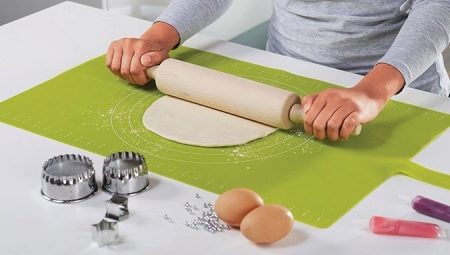Heat-resistant silicone as a material for kitchen utensils began to gain popularity relatively recently. Some housewives still do not exclude its possible harmful effects in contact with food, especially when exposed to high temperatures. However, a provision has been enshrined at the legislative level that absolutely all products, the use of which provides for direct contact with food products, undergo strict security controls before mass release into free circulation.
Such control passes and food grade silicone. This synthetic material is harmless to health and can be used in the manufacture of cookware for cooking. If the products are manufactured by a reliable and conscientious manufacturer, then safety concerns should not arise among consumers.
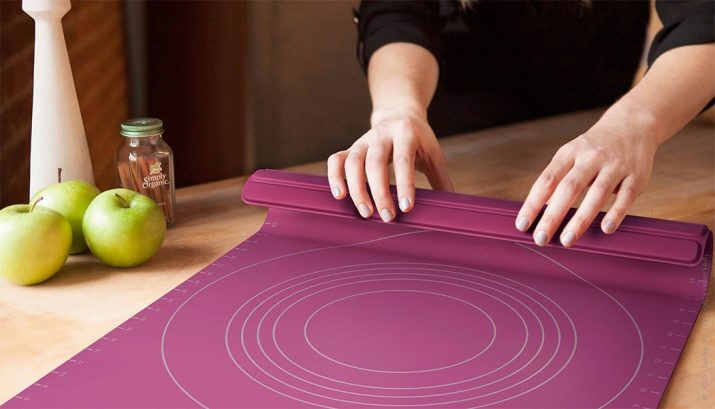
Description
Silicone cooking mats are usually available in rectangular shapes of various colors and sizes. There are people who are very demanding of every touch in the design style of the kitchen. The color scheme of rugs will allow each housewife to choose a product in accordance with the overall design of the kitchen interior. On all four sides of the front side, a marking is applied in the form of a centimeter ruler, which allows you to easily roll the dough exactly under the existing baking sheet.
The markup is convenient not only when rolling. With its help, you can easily "cut out" some types of confectionery from the dough by applying the side with a ruler to the edge of the dough.In the center of the mat there are circles of various diameters and the size of each of them is marked, so rolling out the desired circle from the dough, for example, for pizza, will not be difficult. Sustainable paint applied marking is not erased throughout the life of the mat.
A variety of product sizes will pleasantly surprise you when choosing the most demanding customer. These are miniature rugs 30x40 cm, and medium products 60x40 cm, and large ones with a size of 80x60 cm, and special 68x52 cm, and other options. The smooth glossy texture of the underside of the mat has excellent adhesion to any surface of the countertop; when rolling the dough, the mat remains motionless. Even if you pull the edge of the product, the material will slightly stretch, and the mat will remain in place.
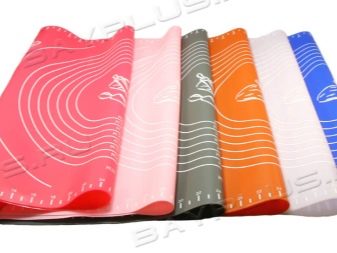

Benefits
The silicone mat will add a lot of useful points to the cooking process, namely:
- the ability to roll out a circle of a given size from the dough;
- raw dough does not stick;
- no sliding on the countertop;
- reduces cooking time;
- reduces the complexity of cooking home baked goods;
- easy to clean;
- durable, unbreakable material;
- compactness of the product (minimum storage space);
- flour is not scattered on the table while rolling the dough.
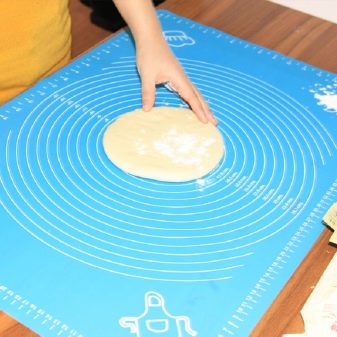
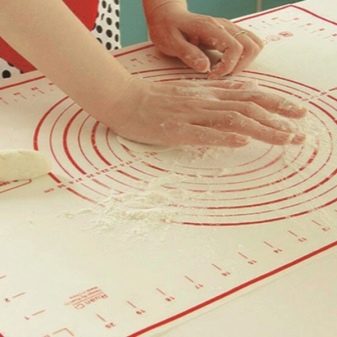
disadvantages
With all the positive properties of silicone mats, one should note the existing disadvantages. A significant drawback is the low strength. If you accidentally hook the surface with a kitchen tool, the mat may break. The downside is that, despite the artificial origin of the material, floor mats are expensive. When folding several times in the places of bends, creases are formed, as a result, the service life is reduced. There are products that eventually lose their brightness.
How to roll out?
Working with dough of any kind (yeast, puff, fresh, butter, shortbread and other types) is a delicate matter that requires some skill and scrupulousness. The use of a silicone mat for rolling dough at home greatly simplifies the task. A part of the finished dough is taken and laid out in the middle of the mat. It is not necessary to add flour, the dough will not stick. But some housewives, most likely, according to an old habit, preliminarily pour about 1 tablespoon of flour onto the rug, of course, there will be no harm from this.
Roll out the dough either by the size of the circle applied to the mat, or by the measuring rulers on the side (depending on what you plan to cook). At the same time, the mat does not slip on the table surface during rolling movements of the rolling pin.
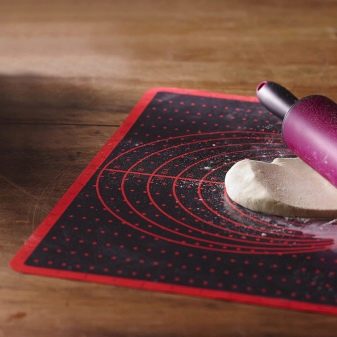
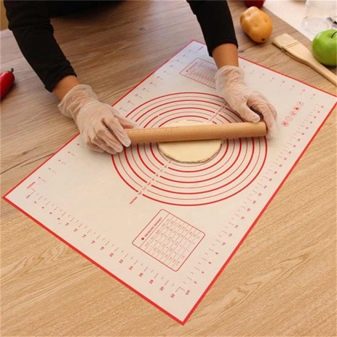
The plasticity of the material allows you to roll the dough layer to a uniform thickness much more convenient and faster than on a solid table.
How to choose?
For contact with food, the quality and safety of the products are of utmost importance. First of all, you need to make sure that there is absolutely no smell coming from the mat. A pungent smell will indicate the dishonesty of the manufacturer using low-quality raw materials, you can’t buy such a product. Silicone outwardly looks like ordinary rubber; it is not easy for a simple buyer to distinguish a fake from a quality product.
Therefore, it is preferable to buy kitchen accessories in specialized centers selling kitchen goods, and not in the household departments of supermarkets. We should not forget that high cost does not always mean good quality, and it is better to refuse suspiciously cheap products.
Be sure to check the label, which should be presented the following comprehensive information:
- manufacturer and its location;
- name and composition of the material;
- marks of conformity and safety;
- document data for the manufacture of the product;
- mark "for food".
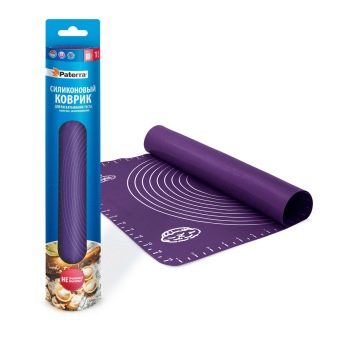
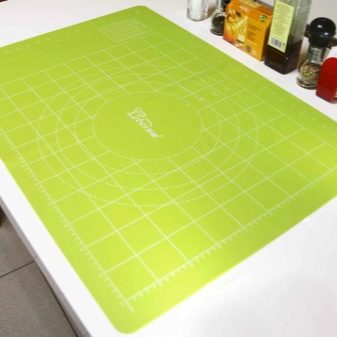
Important! Labeling of different manufacturers may be insignificant differences, but data on safety and method of use are mandatory for everyone.The mat should be flexible, evenly colored, with even edges.
Care Highlights
The following recommendations are recommended:
- Before use, the new mat should be thoroughly washed with baking soda; since silicone is heat-resistant, it’s good to scald it with boiling water, cool it, dry it and you can use it;
- after use, it is enough to rub the mat slightly with a soft sponge under a stream of warm water from the tap - the rest of the flour and dough “slip” off the mat without any effort; compared to washing the countertops when cutting dough without a rug, this is impressive;
- it is not recommended to cut anything with a knife directly on the rug so as not to damage the surface;
- do not fold the mat in half or four, the surface may be damaged at the folds, the product's service life will decrease.
It is better to store in a rolled up roll, intercepting with a thin rubber band.
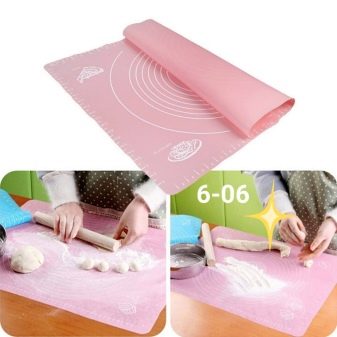
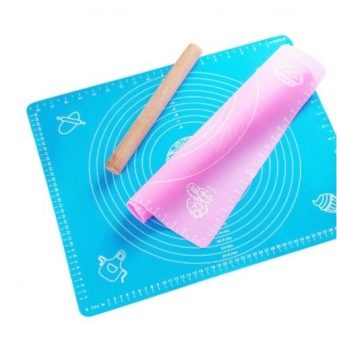
Functionality
On a silicone mat you can not only roll out the dough. This is a heat-resistant non-stick material on which you can bake all kinds of culinary creations and confectionery products, placing them in the oven directly on the rug. If it turned out to prepare too many dumplings or other products for the future, then you can freeze the semi-finished products along with the mat. In this form, it is convenient to get the freezer out of the freezer when necessary.
It is advisable for anyone who often spoils his family with homemade pastries to have a silicone mat for rolling out, including a bag for kneading dough, in the kitchen equipment, so that the kitchen is always guaranteed to be clean after a fuss with pastries, without tiring cleaning.
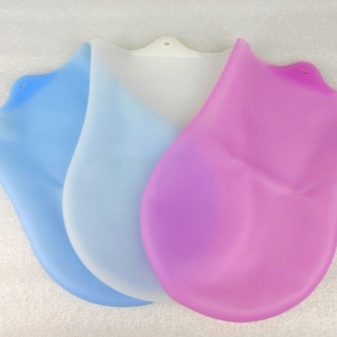

Overview of the mat for rolling dough and baking "Baker" 100% silicone, see the next video.
